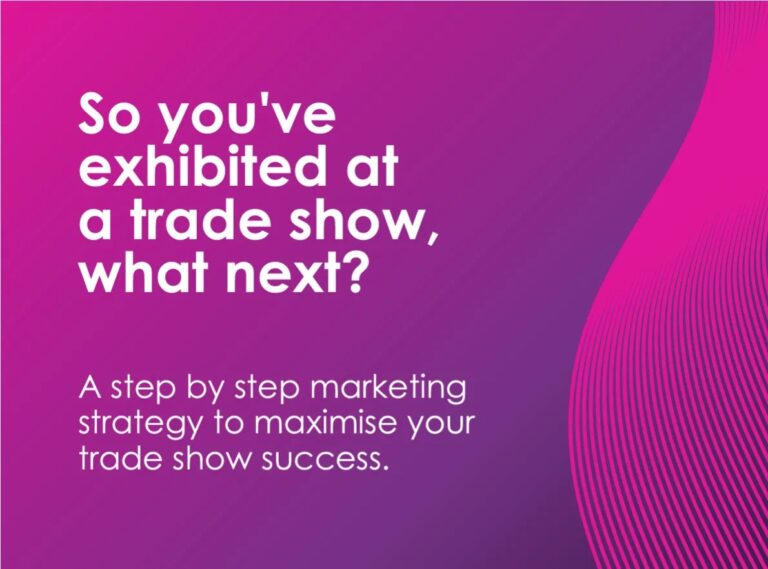Rick Hollister, associate director at Refresh, says a key to trade fair success is making the most of an exhibition in the weeks and months that follow
Very few businesses enter a trade show underprepared. The amount of resource, organisation and funding required to take part in an exhibition – on any scale – means that many brands will feel ready when the day of the show arrives. The build-up is big, and it easy to get wrapped up in the excitement and ride the momentum.
Where brands fail to make the most of a trade show is the aftermath – with a surprisingly high number failing to capitalise on the post-show period. The focus is often so heavily weighted on ‘being there’ that opportunities to build relationships and convert leads are missed in the days and weeks that follow.
The post-show phase is where ROI is truly won or lost. The most successful brands view an exhibition not as the main event, but as the opening act in a sales narrative that stretches on for weeks, months or even years into the future.
To ensure trade show participation leads to meaningful business results, here’s what to focus on in the 24 hours, 48 hours, first week and two weeks after the show.
First 24 hours: organise and prioritise
The first day after the exhibition is not a time to switch off. While it’s tempting to take a well-earned breather, this is the window where you can seize opportunities before anybody else. You can even nominate members of the team who didn’t attend the show to lead the follow up efforts.
A smart place to begin is by consolidating your leads. Ideally, you’ve already logged details of contacts during the event itself, but if not, now is the time, while the conversations are still fresh in your mind.
Segment your leads by level of interest and potential value. High-priority leads, those who showed clear intent, aligned well with your offer, or had decision-making power, should be flagged for immediate attention. This triage approach allows you to tailor your follow-up efforts and allocate resources efficiently.
Also, consider cultural expectations. In countries like Japan and the UAE, prompt acknowledgment is seen as respectful and professional. Even a short thank-you message signals diligence and can elevate your standing in follow-up conversations.
Within 48 hours: reconnect and personalise
Once your leads are organised, initiate your follow-up. Start with a personalised email to each high-priority contact. Mention something specific from your conversation to jog their memory, a product demo they saw, a topic discussed, or even something personal that came up in conversation. Keep the tone friendly yet purposeful.
In Europe and the UK, a concise email outlining next steps or offering additional materials (such as a brochure or case study) is effective. In markets like India or Saudi Arabia, more relationship-driven approaches might be expected to begin with. Including a note of thanks, showing genuine interest in their needs, and proposing a video call or in-person meeting can go a long way.
Social media also has a role. Connect with leads, share a post thanking visitors to your stand, and keep your business top of their minds.
Within one week: deepen engagement
The week following the show is your chance to build on initial contact. For warm leads, this might involve scheduling calls, sharing bespoke proposals, or arranging demos.
For those who expressed passive interest, send follow-up content tailored to their industry or business challenge, e.g. a White Paper, a success story from a similar client, or an invitation to a webinar, for example.
This is also the time to engage internal teams. Pass leads to sales with detailed notes from your conversations. But avoid spamming customers with duplicate content or conflicting communication.
If you operate in multiple regions, consider cultural buying cycles and decision-making structures. In China, for example, decisions often involve group consensus and take longer, so your approach may need to be more patient and layered. In contrast, in the US or UK, a more direct sales discussion could be appropriate. Remember there’s no silver bullet: Use the conversations you had to the show to gauge the tone and set the pace.
Within two weeks: convert and measure
Two weeks post-show is the sweet spot for conversion. By now, the excitement of the event has faded, and buyers are evaluating their options. Your role is to maintain momentum and keep your offering front of mind.
Ensure all leads have received at least one meaningful touchpoint since the event. For hot prospects, consider pushing on with a proposal submission, negotiation meeting, or product trial offering. For colder leads, place them into a longer-term nurture campaign with periodic check-ins and valuable content that you may be able to offer free as a taster.
This is also the time to measure your performance. Review KPIs such as the number of leads generated, follow-up rates, meetings booked, and deals closed or progressed. This will help you understand what worked, what didn’t, and how to optimise future trade show participation.
Finally, consider sending a brief survey to attendees or prospects who visited your stand.
Remember: one size doesn’t fit all
While this timeline provides a solid framework, adapting your follow-up strategy to respect regional business cultures is essential.
In the Gulf region, for instance, face-to-face meetings and trust-building are often prioritised over hard-sell tactics. In France or Italy, relationship dynamics may evolve over several conversations before any commitment is made.
Local representation, native-language communication, and awareness of etiquette – such as addressing contacts by their proper title or being flexible with time – all contribute to an effective approach that gets results.
By treating the post-show period with the same energy and planning as the exhibition itself, brands can ensure their investment pays off. Not just in impressions and conversations, but in long-term customer growth.
Source: www.exhibitionworld.co.uk


Comments are closed.